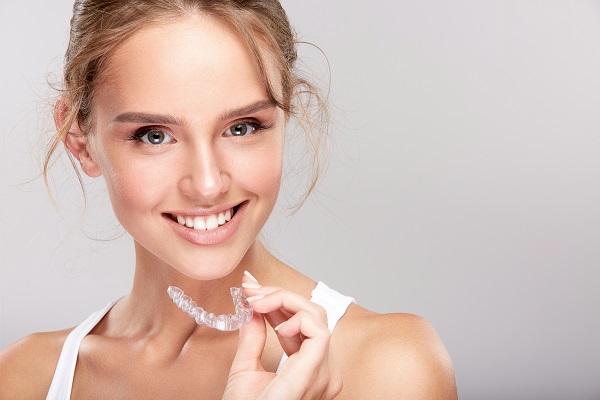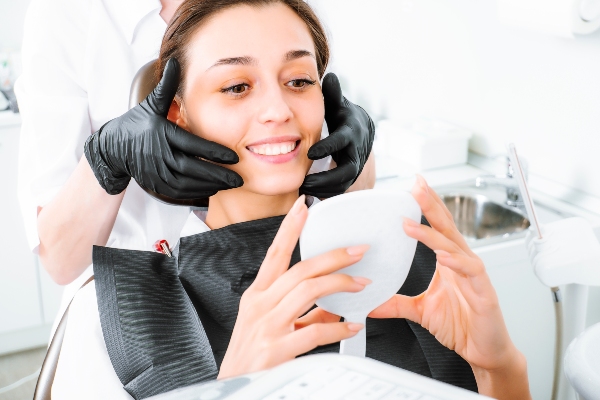[Cosmetic Dentistry] Why is Invisalign so Popular?

Many dental patients have heard about how beneficial Invisalign® is, but many also do not know whether they should believe the hype and seek treatment for themselves. By having more information about what it is exactly and how the treatment process works, patients can make a more informed decision as to whether it is right for them.
An overview of Invisalign®
Invisalign® has helped many with mild to moderate teeth and jaw misalignments achieve a more attractive smile and better oral health. The following details give more information about the treatment, including what Invisalign® is exactly, the benefits, how it compares to other types of alignment procedures and an overview of the entire process.
What is Invisalign®?
Invisalign® is a brand name form of clear aligners treatment, and it is perhaps the most popular form of clear aligners. It is a way to straighten teeth through wearing specially made aligners, which are transparent trays that are custom-fit over the patient’s teeth to slowly pull them into a more well-aligned position. The treatment process is supervised and managed by a dental professional, such as a cosmetic dentist, orthodontist or general dentist. It is primarily for patients with mild to moderate malocclusions, and they may not be as recommended in more severe cases.
The benefits of Invisalign®
So why exactly is Invisalign® so popular? There are many benefits that this treatment offers over other forms:
- Quality results
- Transparent appearance
- Faster treatment
- More comfortable fit
- Easier to care for teeth
The long-term benefits include a straighter smile that brings the individual more confidence. What really sets Invisalign® apart, however, is the quality experience during treatment. The trays are essentially invisible to others and make caring for teeth much easier. Patients are free to eat similar to how they did before Invisalign® and often see faster results.
Invisalign® vs braces
When deciding on teeth straightening, patients often have to choose between either Invisalign® and traditional braces, which are perhaps the two most popular options. Both are highly effective at straightening smiles, and each has its own advantages and potential drawbacks. Of course, one of the most well-known benefits is the transparent nature of Invisalign®, whereas brackets and wires with traditional braces are highly visible. However, patients do have to remember to wear the trays regularly at most times or else the treatment may not be as effective.
How the process works
Each cosmetic dentist has their own process of treating Invisalign® patients. The first step is typically a consultation, during which a dental impression is taken, the dentist conducts an oral examination and a determination is made as to whether the patient is a good candidate for Invisalign®. Once treatment begins, the patient will have to take care of the aligners and wear them for at least 20 to 22 hours each day and make all scheduled check-up visits.
A cosmetic dentist can explain more about Invisalign®
To straighten your smile, get in touch with our team today to learn more about the Invisalign® process and what makes it so popular. We are more than happy to answer any questions you have.
Are you considering Invisalign in the New York area? Get more information at https://www.newyorkdentaloffice.com.
Check out what others are saying about our services on Yelp: Read our Yelp reviews.
Recent Posts
A root canal removes the infected pulp, then cleans and seals the tooth. Many patients may be unsure if there is anything else they need to do after the root canal. The answer is yes; they will need a dental restoration to restore the tooth's functionality. Let us dive into why leaving a treated tooth…
A dental restoration can improve your appearance and dental health. Your dentist can help you prepare for your procedure. The consultation can also tell you how you should care for your new smile. Here are the details if you want to know how to maintain your dental restoration for lasting results.Some fluoride treatments and toothpaste…
Dental restoration is a term used to describe the process of repairing or replacing damaged, decayed, or missing teeth. Several dental restoration options are available to patients, ranging from simple fillings to more complex procedures such as dental implants and crowns. This article will explore some of the most common dental restoration options available and…
A restorative dentist can help transform dental health and restore confidence in your smile. These dental professionals address a variety of dental issues, from missing teeth to damaged enamel. The goal of restorative dentistry is to improve both the function and appearance of your teeth, allowing you to achieve better oral health and renew your…



